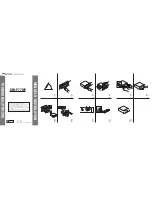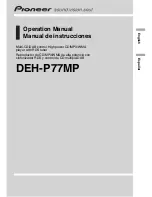
Dual VLAN/Network with Outbound NAT
If we start with the configuration in Dual VLAN/Network, it should be noted that this configuration
is not sufficient if the servers on the internal network require Internet connectivity. Equalizer will
properly send traffic from the internal network to the Internet, but because the internal network is
non-routable, hosts on the Internet will not be able to respond. One way to solve this problem is
to have a separate NAT gateway for the server network, as described in Dual VLAN/Network with
2 Gateways. However, because most locations have a single outbound link, configurations with
only a single gateway must use Outbound NAT.
Note
- The Outbound NAT feature is not available for IPv6 on Equalizer.
Outbound NAT allows the administrator to associate two subnets together using the outbound_nat
parameter. The
from
address is the source IP address (or range of addresses) to which this NAT
rule applies. Use a CIDR-format IP address to specify a range. If the source IP address of an
outbound packet matches this IP address (or falls within the specified range), then the packet is
modified to use the IP address specified by the
out
parameter as the source IP.
The
out
address specifies that if the source IP address of an outbound packet matches the IP
address (or IP address range) specified by the
from
parameter, then the packet is modified to
use this IP address as the source IP.
eqcli> vlan
vlan-name
subnet
subnet-name
nat from
ip_cidr
out 1.2.3.33 nat
subnet-name
out gw
10.0.0.254
Outbound NAT means that now we are taking packets from the internal network and sending them
out of the external network. This means that the packets are routed, and we need to enable
permissions between the networks:
eqcli > vlan internal subnet net permit external:net
eqcli: 12000287: Operation successful
eqcli > vlan external subnet net permit internal:net
eqcli: 12000287: Operation successful
Note that the permissions need to be set on both sides - the internal network is configured to
allow traffic from the external network, and the external network is configured to allow traffic
from the internal network.
Now we can analyze the changes to the running configuration that we have made. First, we
enabled Outbound NAT:
IP NAT Rules:
Copyright © 2014 Coyote Point Systems, A Subsidiary of Fortinet, Inc.
All Rights Reserved.
107
Equalizer Administration Guide
Содержание Equalizer GX Series
Страница 18: ......
Страница 32: ...Overview 32 Copyright 2014 Coyote Point Systems A Subsidiary of Fortinet Inc ...
Страница 42: ......
Страница 52: ......
Страница 64: ......
Страница 72: ......
Страница 76: ......
Страница 123: ...Copyright 2014 Coyote Point Systems A Subsidiary of Fortinet Inc All Rights Reserved 123 Equalizer Administration Guide ...
Страница 228: ......
Страница 238: ......
Страница 411: ...Copyright 2014 Coyote Point Systems A Subsidiary of Fortinet Inc All Rights Reserved 411 Equalizer Administration Guide ...
Страница 459: ...Copyright 2014 Coyote Point Systems A Subsidiary of Fortinet Inc All Rights Reserved 459 Equalizer Administration Guide ...
Страница 476: ......
Страница 492: ......
Страница 530: ......
Страница 614: ......
Страница 626: ......
Страница 638: ......
Страница 678: ......
Страница 732: ...Using SNMP Traps 732 Copyright 2014 Coyote Point Systems A Subsidiary of Fortinet Inc ...
Страница 754: ......
Страница 790: ......
Страница 804: ......
Страница 842: ......
Страница 847: ...Copyright 2014 Coyote Point Systems A Subsidiary of Fortinet Inc All Rights Reserved 847 Equalizer Administration Guide ...
Страница 866: ......
















































